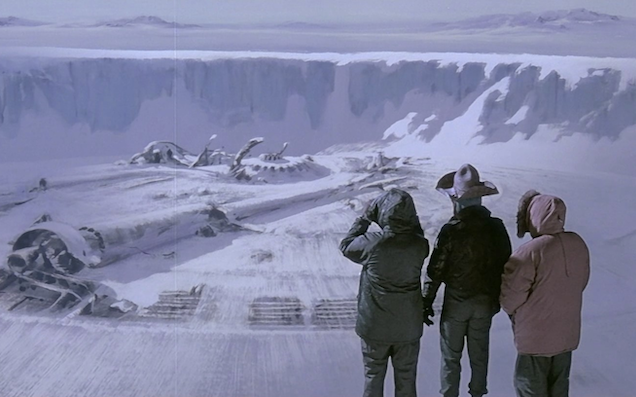
My personal favourite genre of news story is, by far, ‘science story that could feasibly appear at the start of a science fiction movie before things go horribly wrong’. Things like when researchers successfully brought some frozen 40,000-year-old worms back to life last year or when Harvard’s astronomy chair theorised that ‘Oumuamua, the first interstellar object ever documented passing through our solar system, could be a solar-sail-powered alien probe. Nothing terrible has come of the worms being revived (yet) and ‘Oumuamua has already fucked right off, presumably never to be seen again by us, without having deposited any alien invaders — but at the very least they gave us some fun, ominous headlines. To me, this story about scientists discovering a massive metallic mass underneath a crater on the Moon has exactly the same vibes.
[jwplayer OJnTuHtf]
According to a study from Baylor University in Texas, a huge mass has been discovered beneath with South Pole-Aitken basin, a 2,500-kilometre-wide crater on the surface of the moon. The study’s lead author, Dr Peter B James, says that the mass is just unbelievably huge: “Imagine taking a pile of metal five times larger than the Big Island of Hawaii and burying it underground. That’s roughly how much unexpected mass we detected.”
The researchers combined data from the NASA Gravity Recovery and Interior Laboratory mission (which used gravitational mapping to get a feel of the moon’s internal structure) with lunar topography data from the Lunar Reconnaissance Orbiter, and ended up finding an “unexpectedly large amount of mass hundreds of miles underneath the South Pole-Aitken basin“.
While I personally would love to believe that this is aliens, Dr James suggests a more reasonable explanation: “One of the explanations of this extra mass is that the metal from the asteroid that formed this crater is still embedded in the Moon’s mantle. . . . We did the math and showed that a sufficiently dispersed core of the asteroid that made the impact could remain suspended in the Moon’s mantle until the present day, rather than sinking to the Moon’s core.”
The South Pole-Aitken basin, understood to be around 4 billion years old, is the largest preserved crater we have discovered in the solar system — over ten times larger than the largest crater on Earth.
(It’s aliens.)



